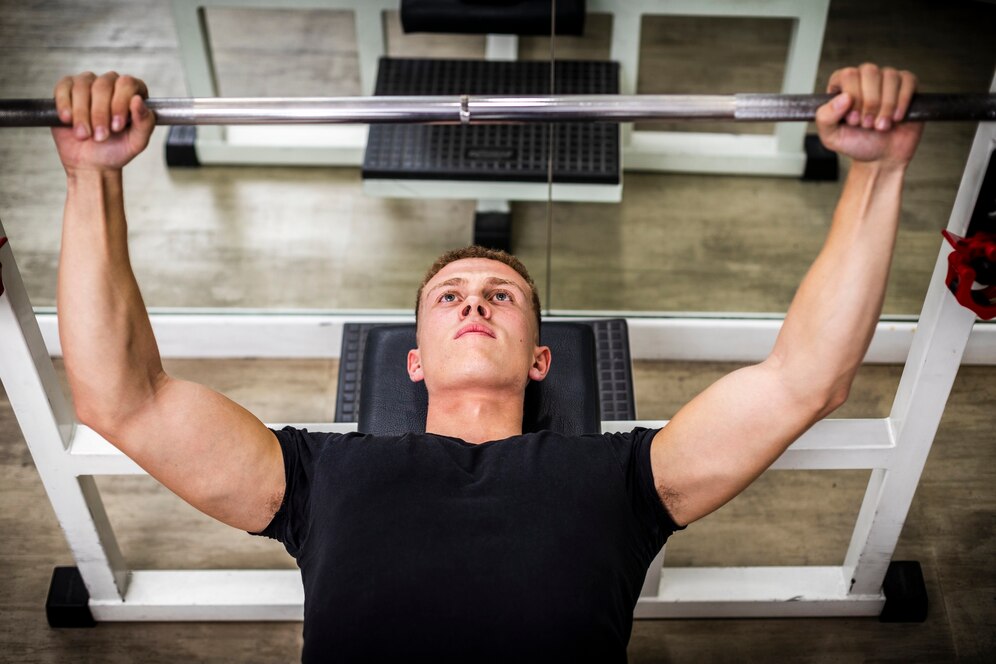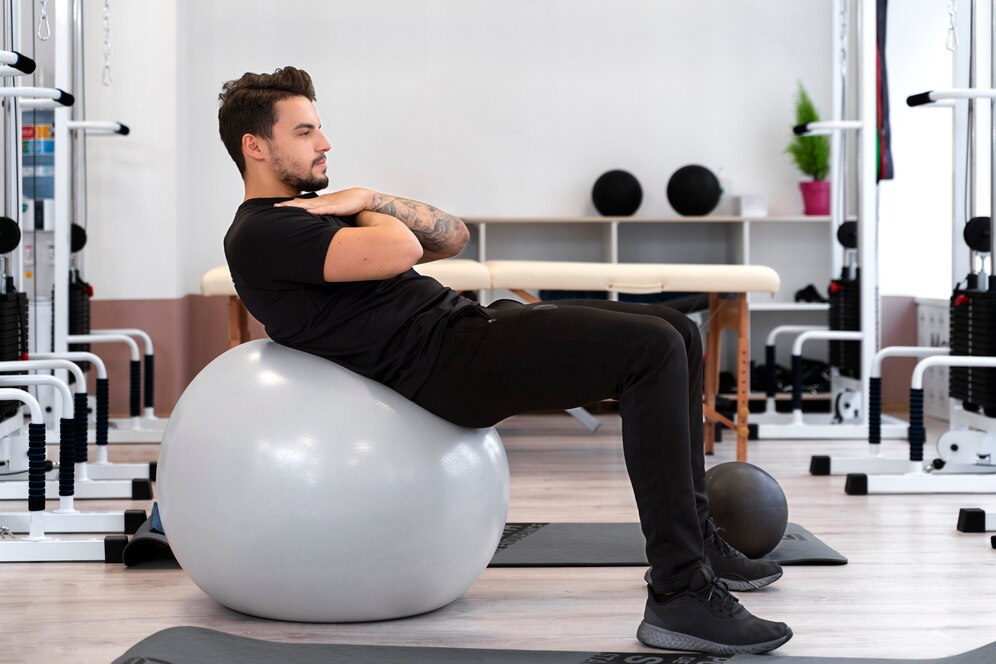
Balance and Stability Exercises for Core Strength
Core strength is essential for overall fitness, posture, and injury prevention. Many think core training means crunches and sit-ups. But real core strength is about better balance and stability. A strong, stable core helps you generate power. It also keeps your posture right and lets you move well during workouts and daily tasks.
In this article, we’ll explore:
- Why balance and stability are key components of core strength
- The benefits of incorporating stability exercises into your routine
- The best exercises to enhance your balance and core stability
The Importance of Core Stability and Balance
Your core consists of muscles in the abdomen, lower back, hips, and pelvis. These muscles support your spine. They help you maintain posture and allow smooth movement.
Why Core Stability Matters:
- Enhances Athletic Performance: A strong core improves agility, speed, and coordination.
- Prevents Injuries: Stability exercises strengthen muscles that protect the lower back and joints.
- Improves Posture: Proper core engagement prevents slouching and reduces strain on the spine.
- Supports Functional Movement: Everyday activities like walking, bending, and lifting become easier.
Key Benefits of Balance and Stability Training
1. Strengthens Deep Core Muscles
Balance and stability training works differently than traditional ab exercises. It engages deep core muscles like the transverse abdominis and multifidus. These muscles provide spinal support and prevent injuries.
Best Exercises:
- Plank variations
- Dead bug exercise
- Bird-dog exercise
2. Improves Coordination and Body Awareness
Balance training enhances proprioception—the body’s ability to sense movement and position. This is especially beneficial for athletes and older adults looking to prevent falls.
Best Exercises:
- Single-leg balance holds
- Stability ball exercises
- Bosu ball squats
3. Enhances Core Endurance
Core endurance helps you keep good posture and control your movements for a long time. This is crucial for weightlifting, running, and other physical activities.
Best Exercises:
- Hollow body holds
- Farmer’s carry
- Stability ball planks
4. Reduces Lower Back Pain
Weak core muscles often lead to lower back pain. Stability training builds the muscles that support your spine. This helps reduce pain and prevent injuries later on.
Best Exercises:
- Glute bridges
- Pallof press
- Superman exercise
Best Balance and Stability Exercises for Core Strength
1. Plank Variations
Planks are a fundamental core stability exercise that engages multiple muscle groups.
How to Do It:
- Keep your body in a straight line from head to heels.
- Engage your core and hold for 30-60 seconds.
Variations:
- Side plank – Targets obliques.
- Plank with arm or leg lift – Adds instability to challenge balance.
- Bosu ball plank – Engages stabiliser muscles.
2. Bird-Dog Exercise
This movement enhances core stability, coordination, and balance.
How to Do It:
- Start on all fours with hands under shoulders and knees under hips.
- Extend one arm and the opposite leg while keeping your core tight.
- Hold for a few seconds, then switch sides.
Reps: 10-12 per side
3. Dead Bug Exercise
A great exercise for strengthening the deep core muscles while improving coordination.
How to Do It:
- Lie on your back with arms extended toward the ceiling and knees bent at 90 degrees.
- Lower your right arm and left leg simultaneously, keeping your core engaged.
- Return to the start position and switch sides.
Reps: 10-12 per side
4. Single-Leg Balance Holds
Improves stability and proprioception by challenging your balance.
How to Do It:
- Stand on one leg with the other knee bent at a 90-degree angle.
- Hold for 20-30 seconds, then switch legs.
- Increase difficulty by closing your eyes or standing on a soft surface.
Reps: 3 per leg
5. Stability Ball Rollouts
An advanced stability exercise that strengthens the core and improves control.
How to Do It:
- Kneel in front of a stability ball with hands placed on top.
- Slowly roll the ball forward, extending your arms while keeping your core tight.
- Return to the starting position.
Reps: 10-12
6. Pallof Press

This anti-rotation exercise strengthens the core while improving stability.
How to Do It:
- Stand with a resistance band anchored to the side.
- Hold the band at chest height and press it straight out, resisting rotation.
- Hold for a few seconds, then return.
Reps: 10 per side
7. Bosu Ball Squats

A functional exercise that challenges balance while strengthening the lower body and core.
How to Do It:
- Stand on a Bosu ball with feet shoulder-width apart.
- Lower into a squat while maintaining balance.
- Return to the start position.
Reps: 10-12
How to Incorporate Balance and Stability Work into Your Routine
1. Warm-Up with Stability Exercises
Start workouts with movements that engage your core and improve coordination.
Example:
- Bird-dog (2 sets of 10 per side)
- Dead bug (2 sets of 10 per side)
- Plank hold (30-60 seconds)
2. Add Core Stability Drills to Strength Training
Integrate stability work into your regular strength training for better functional movement.
Example:
- Superset squats with Pallof presses
- Perform stability ball planks between sets of bench press
- Use single-leg balance drills as active recovery
3. Use Balance Training on Rest Days
Improve proprioception and core strength without adding excessive stress to your body.
Example Routine:
- Bosu ball squats (3 sets of 10)
- Single-leg balance holds (3 sets of 30 seconds per leg)
- Stability ball rollouts (3 sets of 10)
Common Mistakes to Avoid
1. Relying Too Much on External Support
If you constantly use a wall or stable surface for balance exercises, you’re not fully engaging your core. Work on gradually reducing support.
2. Holding Your Breath
Breathing is key to core engagement. Focus on controlled breathing to maintain stability during movements.
3. Rushing Through Exercises
Slow, controlled movements improve stability more than fast, uncontrolled reps. Take your time to engage the correct muscles.
4. Ignoring the Lower Body’s Role
Core stability isn’t just about the abs; the glutes and legs also play a crucial role. Include exercises that integrate full-body stability.
Conclusion

Balance and stability exercises are key for core strength and coordination. They also help prevent injuries. Adding these exercises to your routine can boost your athletic performance. They also improve your posture and help you control your movements better.
Key Takeaways:
- Balance and stability training strengthens deep core muscles and improves body awareness.
- Exercises like planks, bird-dogs, and Pallof presses enhance core control.
- Integrate stability work into your warm-ups, strength training, and rest days.
- Avoid common mistakes like rushing through exercises or relying on external support.
A strong and stable core is the foundation of all movement. Begin adding these exercises to your routine today. You’ll enjoy better balance, coordination, and help prevent injuries.